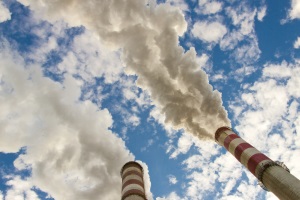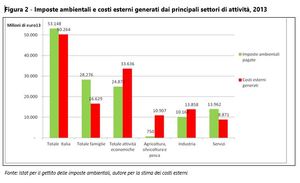Chi inquina, paga? I danni sanitari e ambientali delle attività economiche in Italia: quanto costa l’inquinamento alla collettività (e chi lo paga)

Accise sui prodotti energetici, imposte sui veicoli, tasse sul rumore o su inquinamento e risorse naturali: le tasse ambientali pagate dai residenti in Italia hanno assicurato, nel 2013, un gettito di 53,1 miliardi di euro. Ma è possibile quantificare anche i costi ambientali sopportati dalla collettività, cioè i danni per l'inquinamento prodotto da famiglie e imprese?
Un primo conto - limitato per il momento alle sole emissioni in atmosfera e al rumore dei trasporti - ha visto le famiglie produrre, nel 2013, danni sanitari e ambientali per 16,6 miliardi, seguite dall'industria (13,9 miliardi) e dall'agricoltura (10,9). Esiste però un forte squilibrio tra chi inquina e chi paga: nel 2013 le famiglie hanno pagato il 70% in più rispetto ai danni creati, le imprese il 26% in meno. Il record degli sconti, 93%, va all'agricoltura.
Ci sono margini per una riforma della fiscalità ambientale all'insegna di maggiore equità e trasparenza? Il dossier propone un nuovo approccio per applicare meglio il principio Chi inquina paga, tenendo conto non solo delle tasse ambientali ma anche dei sussidi dannosi per l'ambiente.
Does the polluter pay? The social cost of pollution caused by economic activities and environmental taxes in Italy
Excise duties on energy products, taxes on vehicles, noise, pollution and natural resources: environmental taxes paid by Italian residents ensured revenues totalling 53.1 billion Euros in 2013. Is it possible to quantify the environmental costs borne by the community, namely, the damage to the environment and health caused by pollution sources related to household and enterprise activities, and compare them with the environmental taxes paid by the same activities?
A preliminary calculation of health and environmental damages caused by pollution due to economic activities - limited, for the time being, to emissions into the atmosphere and transport noise pollution - in 2013 showed households at the top of the list, with 16.6 billion, followed by the industrial sector (13.9 billion) and agriculture (10.9). Yet there is a remarkable imbalance between the damages due to actors who pollute (externalities) and the environmental taxes paid by the same actors: in 2013, households paid 70% more than the damage caused, while enterprises paid 26% less. The greatest discount was granted to agriculture (93%). Is there room for a reform of environmental taxation, so as to ensure greater fairness and transparency? This paper sets forth a new approach for a better implementation of the 'Polluter pays' principle, taking into account not only environmental taxation, but also subsidies that are harmful to the environment.






 Focus
Focus
